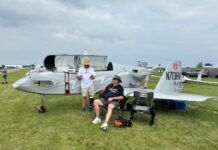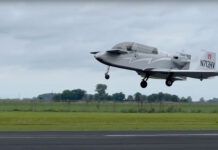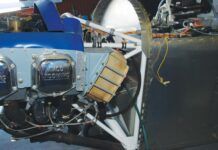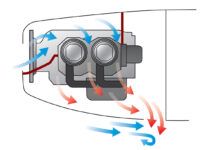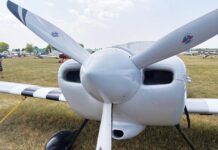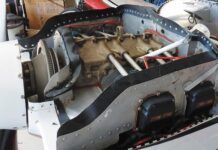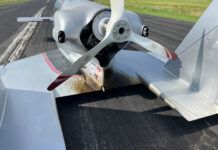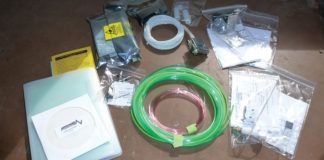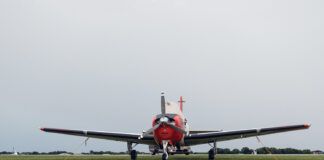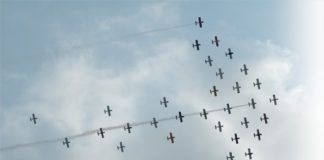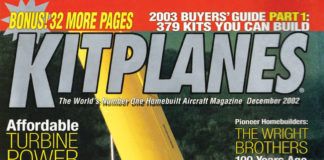Last month we took a look at the basic characteristics of the two most common landing gear configurations: tricycle and taildragger. We will now turn our attention to some critical factors in the proper integration of the gear into the overall airplane configuration.
The configuration of the landing gear and its placement affect the static, ground handling, takeoff, and landing characteristics of the airplane. The combination of all of these considerations drives the landing gear to be placed quite specifically on the configuration. This leaves the designer with remarkably little freedom as to where the landing gear must contact the ground and where it attaches to the airframe. It is important to understand this early in the development of the design so that the gear can be successfully integrated without requiring wholesale changes late in the design process.
We will start by looking at the case where the airplane is stationary on the ground.
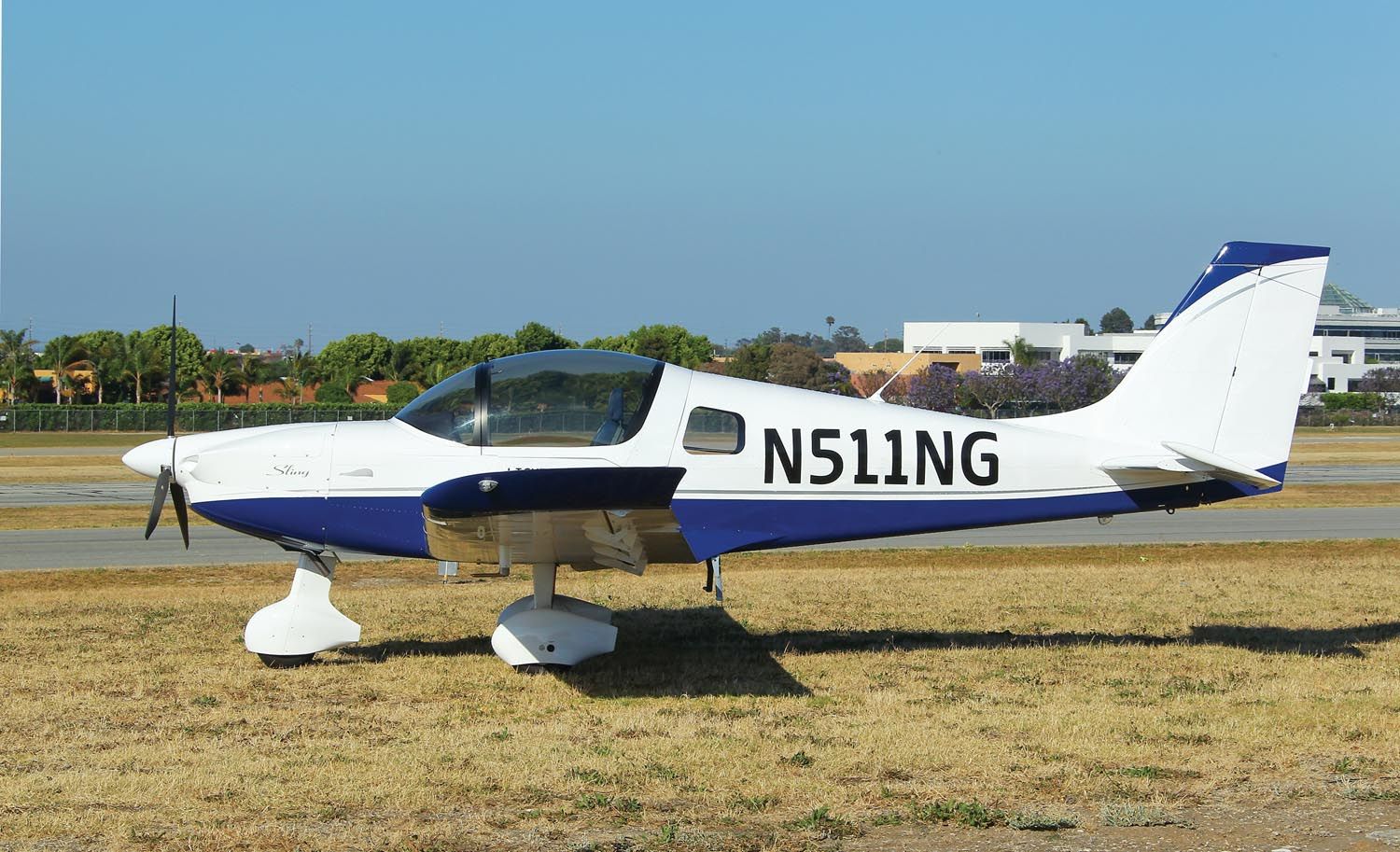
Equilibrium
When the airplane is on the ground, it is supported by the landing gear. The weight of the airplane is reacted by contact between the wheels and the ground. All of the force supporting the airplane against the pull of gravity acts through the contact patch of the tires.
The load is distributed between the three wheels. How much load each wheel carries statically is determined by the horizontal relationship between the wheels and the CG of the airplane.
Equilibrium demands that the sum of all of the forces and moments acting on the airplane must be zero. Accordingly, the sum of the loads on all of the tires in contact with the ground must equal the weight of the airplane.
The moments generated by the wheels must also sum to zero. The farther a wheel is from the CG, the more moment it generates per unit load. This means that a relatively lightly loaded wheel far from the CG (like a nosewheel or tailwheel) will produce enough moment to offset the moment created by a higher loaded wheel mounted closer to the CG.
The closer a wheel is to the CG, the greater the percentage of the total weight of the airplane it carries. A wheel placed directly beneath the CG of the airplane will carry its entire weight.
Static Stability
The contact points of the three wheels of the landing gear form the vertices of a triangle. This is called the “triangle of support.” In order for the airplane to sit stably on its gear, the center of gravity, viewed from above, must fall inside this triangle. When this is the case, the reaction loads on all of the wheels produce moments about the CG that tend to rotate the airplane into the triangle. The moments then balance each other out.
For an airplane with tricycle gear, where the main gear is aft of the CG and the nose gear is ahead of the CG, the moments produced by the wheel reaction loads look like this:
| Gear Leg | Pitching Moment | Rolling Moment |
|---|---|---|
| Nosewheel | Nose Up | Zero |
| Left Main | Nose Down | Right Wing Down |
| Right Main | Nose Down | Left Wing Down |
Looking at how these moments interact, we can see that the nose-up moment created by the nose gear balances out the nose-down moment created by the two main gear legs.
On the roll axis, the right-wing-down moment caused by the left main is balanced by the left-wing-down moment created by the right main.
Accordingly, all of the moments sum to zero, and the airplane sits stably on its gear.
Now let’s consider a case where the CG moves outside the triangle of support:
| Gear Leg | Pitching Moment | Rolling Moment |
|---|---|---|
| Nosewheel | Nose Up | Zero |
| Left Main | Nose Up | Right Wing Down |
| Right Main | Nose Up | Left Wing Down |
Suppose the CG moves aft to the point where it is behind the main landing gear. The moments generated by gear reactions now look like this:
In this case, the rolling moments are still balanced, but all of the pitching moments are nose up. The airplane is not stable and will tip over backwards until some part of the aft fuselage contacts the ground and produces a nose-down moment to counteract the nose-up moment being produced by the mains.
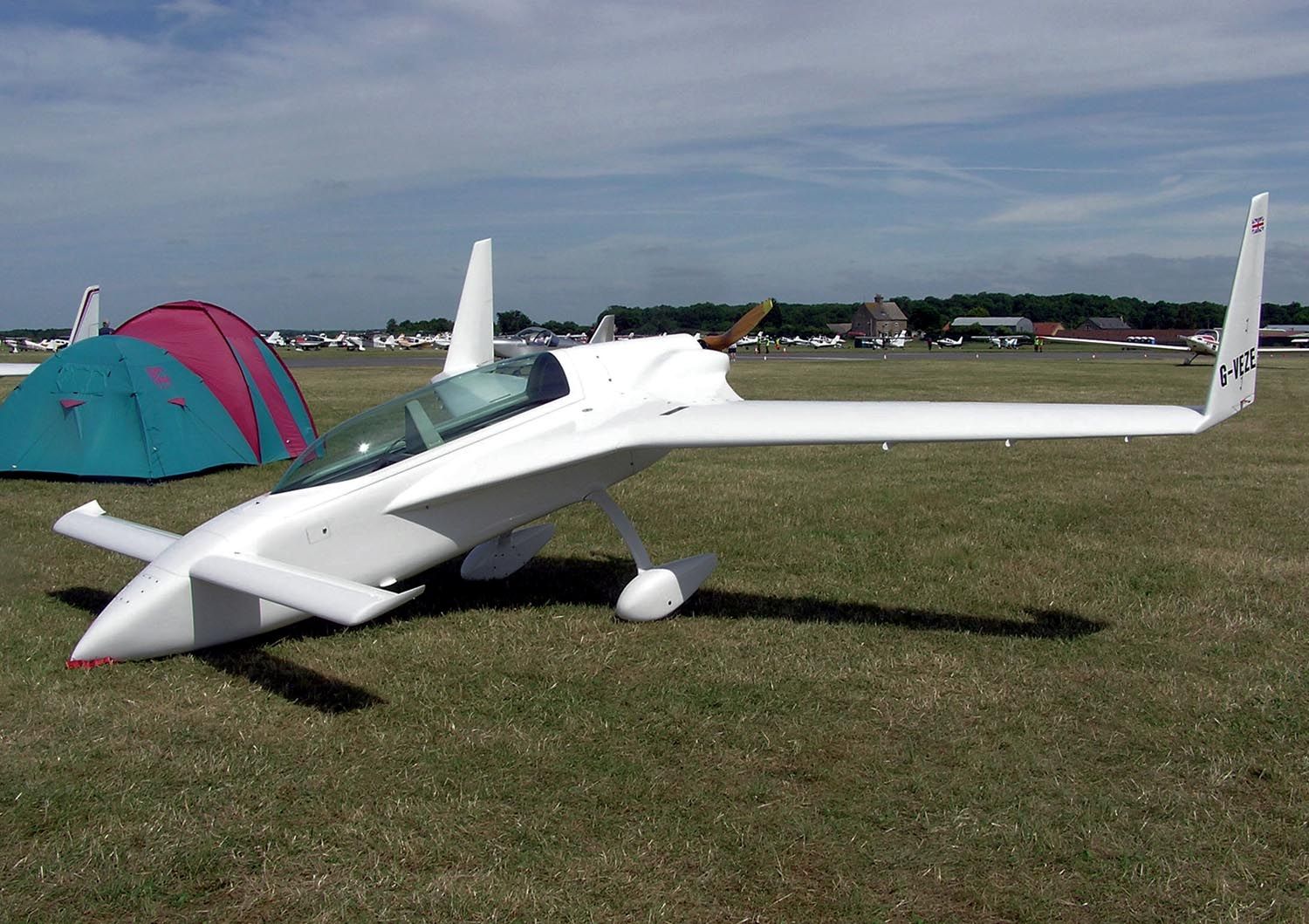
Loading
As we have seen previously, the CG of an airplane moves as its loading condition changes. This can be a significant issue for landing gear placement if there is a significant distance between the empty CG of the airplane and its loaded CG. It can be particularly problematic if the flight CG is significantly forward of the empty CG.
This situation is relatively common for pusher configurations. As we saw in our discussions of CG, the heavy weight of the engine, which is aft of the most aft allowable flight CG, is counterbalanced by the weight of the pilot, who sits well forward of the CG. Depending on the details of the configuration, adding passengers may also move the CG forward.
When the airplane is parked and the pilot and, possibly, the passengers get out, the CG moves aft significantly. For some airplanes, it moves far enough to end up aft of the main landing gear. If this happens, the airplane must have some provisions to keep it from tipping over backwards.
It’s tempting to the designer to simply move the main gear aft of the empty CG so the airplane does not tip over backwards when unloaded. This can sometimes work, but as we will see later, if the gear is too far aft, it causes problems on takeoff. The main gear may be so far aft of the flight CG that the main gear reaction forces produce too much nose-down pitching moment. It will become difficult or impossible to raise the nose gear off the runway. This can make the takeoff run very long because the airplane cannot rotate until well above normal liftoff speed, and it may also cause controllability problems on takeoff rotation.
On configurations where the main gear is placed in its proper location to the flight CG and the airplane will tip backwards when empty, there are two solutions that have been used successfully to keep the airplane in equilibrium on the ground.
The first approach is to use some form of tail bumper to keep the airplane from rotating too far nose up. Airplanes using this approach will sit with the nose gear off the ground and the tail bumper grounded. The tail bumper can be relatively simple, like a skid or a small tailwheel, provided the aft fuselage is long enough that the airplane will not tip back too far, and the aft fuselage will protect the prop from hitting the ground in the parked attitude.
A few tail-pusher airplanes like Ed Lesher’s Teal and the Taylor Mini-IMP use bumpers on the tip of a ventral tail surface to guard against prop strikes on takeoff and also to protect against tipping backwards when on the ground.
Some configurations might require a retractable or removable tail stand to prevent tip-back. This approach should only be used as a last resort in my opinion. A retractable tail stand is heavy and complex, and will prevent the airplane from rotating for takeoff if it is left deployed. This can lead to a hazardous situation, so checking that the tail stand is retracted will become a safety-critical preflight checklist item, similar to ensuring that all control locks are removed.
A removable tail stand must be manually placed when parking the airplane and manually removed to go flying. This can be troublesome since the operator must find a way to get the stand in place without letting the airplane tip back, and it has the reverse problem when the stand is removed before taxiing. It will also be necessary to put the stand aboard the airplane for every flight to be able to park at any airport where the airplane lands.
Sometimes the aft body of the airplane is so short that there isn’t a place to put a tail stand or tail bumper. The Rutan canards and their descendants (VariEze, Long-EZ, Velocity, Cozy, etc.) have this issue. The solution created by Burt Rutan for the original VariEze, which carried forward to all of the follow-on airplanes of similar configuration, was to retract or “kneel” the nose landing gear when parking the airplane. Tipping the airplane nose down moves the CG forward relative to the main wheels. In the kneeled attitude, the airplane sits stably when empty. Most airplanes of this class have actuators that can extend the nose gear and rotate the airplane to level on the gear after it is loaded and the engine started.
Next month we will continue our study of landing gear with a look at what happens once the airplane is in motion.

